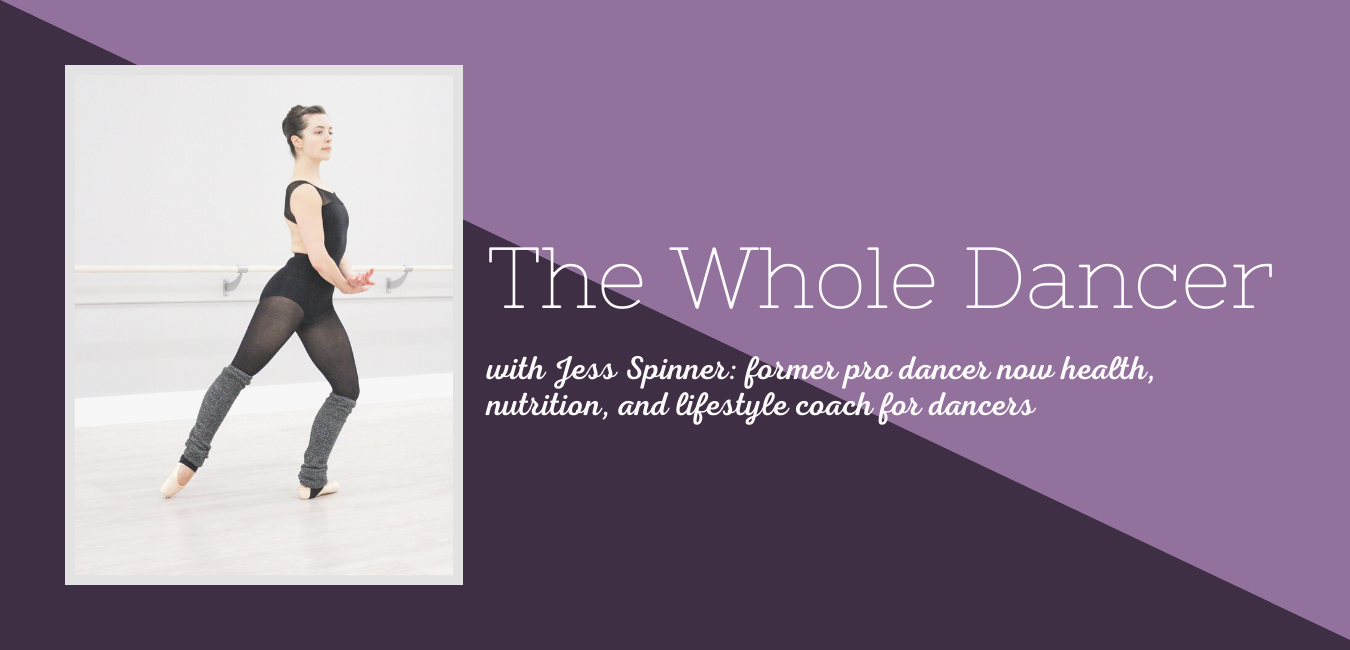For pros and aspiring pros.
The dancers who reach out to me for support are mostly professional dancers or aspiring professional dancers.
In that space, as much as we wish it were different, there is still aesthetic pressure. It exists whether it’s explicitly communicated or implied, and it’s something we should face since we can’t wish it away.
If you’re questioning what weight is healthy for you, consider letting go of the scale and allowing your body to be the guide. Your healthy weight should be easily maintained while getting adequate fuel.
Honor your body.
Your body is your instrument as a dancer, but in your life, it’s so much more than that. It’s your home. It’s something to be grateful for just simply because it exists and carries you through your days.
Honoring your body is about meeting your needs. It’s about caring for yourself and recognizing that without this home of yours, dance wouldn’t be an option.
To be a healthy dancer, ask yourself, Am I truly caring for my body outside the studio?
Respect your individual needs.
It doesn’t matter how anyone else eats. Your food needs are completely individual. Don’t trick yourself into believing that you are the exception to the rules when it comes to calorie needs for highly active individuals.
Eating around 1,200 to 1,500 calories a day is excessively low and unhealthy for any pre-professional or professional dancer. Your needs are likely going to be well over 2,000 calories per day.
To be a healthy dancer, you need to ask yourself, Am I meeting my personal needs?
Prioritize high-quality fuel.
Your food choices matter. What matters even more than that is your relationship to food, so make sure that’s in a good place before you think about food quality.
So what is high-quality fuel? Food that is high in micronutrients (vitamins and minerals) and supplies your body with the macronutrients (protein, carbs, and fats) it needs to have ample energy to perform at its peak.
It’s important that you don’t over prioritize micronutrient needs and end up under consuming from a calorie or macronutrient standpoint. Many foods high in essential vitamins and minerals (fruits, vegetables, and plant foods) are relatively low in calories. This is why you need varied food choices, and it’s important to include calorically dense foods to meet your needs as a performing athlete.
To be a healthy dancer ask yourself, Am I eating varied, nutrient-dense foods?
Plan strategically.
To prioritize your health and well-being, you need to do some planning. This can be as simple as sitting down and looking at your scheduled commitments, then figuring out where you’ll fit in meals and snacks. A good basic guideline for dancers is to have three meals and two snacks or two bigger meals and three to five snacks.
Once you see where your opportunities for fueling exist, you should make yourself some lists of breakfast, lunch, dinner, and snack ideas. (For my snacking guide, click here.) Pay attention to how you feel after eating your various options. You may find that some work better in some time frames than others, and it’s worth making a note of that for yourself.
There are some foods you may want to avoid before dancing like those higher in fiber, which may cause bloating or stomach discomfort. Eating a meal that’s mostly protein won’t give you the same boost of energy that you’ll get from carbs. As always, aim for balance (including small amounts of protein, carbs, and fat) and tune into what works for you personally.
To be a healthy dancer, ask yourself, Am I planning strategic fuel within my schedule?
Support yourself as a whole dancer.
You have to nurture your body, mind, and soul. In addition to the food you eat, consider your non-food food or primary food. Primary food includes career (dance for most of you), physical activity (not just cross-training), relationships, and spirituality.
There are likely some missing pieces and areas of your life that need more attention. Start small and give yourself one new support to get started. Implement a morning routine, reassess your breakfast choices, start a meditation practice, or hire a health coach. The initial steps here can be small, but the huge, positive shifts you can create are immeasurable.
To be a healthy dancer, ask yourself, What supportive activities or people are missing from my life?
Work with people of varying backgrounds.
I’ve lost count of the number of times someone has told me, “I was working with a dietitian, and they just didn’t seem to get it.” This doesn’t mean dietitians are bad; on the contrary, it’s a matter of finding the person who is a true fit for your needs.
The dancers I work with fall into two categories. First, they have big goals but their body and food relationships are distracting them from the dancing. Or second, they have gotten to a place with their dancing and life that feels supremely unbalanced. They need support to create a life that supports their best dancing and their best life.
If you fall into either of those categories, set up your complimentary coaching call here. If you’re a good fit, I’ll share with you the details of 1:1 coaching. More importantly, I’ll share all the possibilities you can look forward to through our work together!

